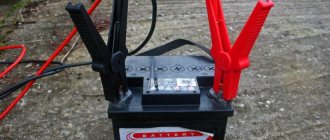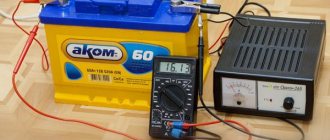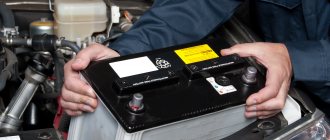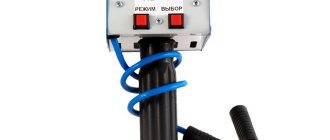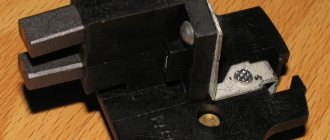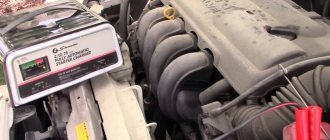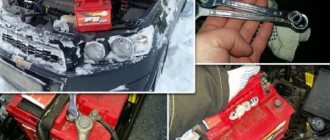The battery is an integral component of a modern car. Even if we do not consider electric models, starting the engine without a battery is almost impossible, as is the autonomous operation of electricity consumers. When the engine is running, the entire load of supplying electricity to the on-board network falls on the shoulders of the generator, which also recharges the battery, which lost part of its charge when starting the power unit.
A serviceable battery lasts quite a long time, but for this it needs to be looked after, even if a maintenance-free type of battery is used. This means that you will often have to remove the battery and install it back. We will tell you how to do it correctly in this article.
Types and principles of operation of car batteries
To know how to connect a battery to a car, it is advisable to understand how car power supplies are designed and what they are.
The classic battery is named so for a reason; it contains several cells (in our case, 6) connected in series. However, there are modifications in which the sections are connected in parallel - if you need to reduce the current of the device.
That is, the battery is a battery of individual batteries of small capacity, separated by a partition. Each jar is filled with electrolyte and contains a pair of electrodes in the form of plates. If no power is applied to the battery terminals, no charge is wasted unless leakage currents are taken into account. Otherwise, it can be in two states: giving or receiving charge.
When starting the engine or connecting a load while the engine is not running, the battery releases its previously accumulated charge. It is enough to connect the load so that the oxidation process begins at the battery anode, accompanied by the release of free electrons. They begin to move towards the cathode, forming a discharge current. At the cathode, reduction reactions predominate.
When the power unit is running, the battery is charged, and this is a process that restores the battery capacity, during which the direction of movement changes to the opposite, from the cathode to the anode.
Despite the similarity in operating principle, batteries can differ greatly in design. There are several types of car batteries:
- Lead-acid batteries. At the moment, this is the most common type of battery, built according to the classical scheme: six series-connected cans filled with a solution of sulfuric acid. Under ideal operating and maintenance conditions, the service life of this type of battery is about 5 years. In practice this period is shorter.
- AGM batteries are an improved version of the lead-acid battery. Here, the electrolyte is poured into a microporous fiberglass material, which gives such batteries a number of advantages - a significant reduction in self-discharge, a multiple increase in charging speed, a safer design, and the ability to accept a charge more easily. Mass distribution is hampered by higher costs.
- Lead-helium batteries contain a jelly-like electrolyte due to the addition of silicon fillers to the liquid. Such a battery is not afraid of tilts and overturns, and its main disadvantage is the fear of deep discharges, even relatively short-term ones.
- Traction batteries are characterized by high power, therefore they are used mainly in electric vehicles. Capable of releasing energy for a long time, withstanding many charge/discharge cycles. The nominal capacity can reach 1000 A*hour. Batteries of this type last up to 10 years.
Car engine
The engine is the heart of the car, without it there is no way to set the car in motion. This important unit serves to convert energy into mechanical work necessary for driving. The most common type of automobile engine is a carburetor or injection piston internal combustion engine, which can use various types of automobile fuel. Carburetor engines can now only be found on older car models. In addition to the piston engine, some automakers use rotary piston engines and electric motors. Electric motors are more often used in conjunction with internal combustion engines in hybrid vehicles.
The internal structure of the engine is quite complex, and if it breaks down, special knowledge and skills are required to repair it. All the average user can do is check the level, add oil and replace the spark plugs. Therefore, under the hood, the engine is usually closed with a plastic panel, but nevertheless, free access is always provided to the oil filler neck, level dipstick and spark plugs. There are known cases when snakes, cats, dogs, small rodents and even human illegal immigrants were found under the hood of cars.
How to properly install a battery in a car
In order to install a battery in a car, the car owner does not require high qualifications. In any case, this operation is preceded by removing the battery. As a rule, in modern cars the battery is installed on a special platform, which is located in one of the corners of the engine compartment.
Before removal, you must turn off the ignition, it is advisable to remove the key. Let's move on to the engine compartment. There are two wires connected to the battery, one of the terminals is black, the positive terminal is usually painted red. First you need to remove the negative black wire, called ground, and only then the wire going to the positive. This sequence of actions avoids an accidental short circuit that can happen if you remove the wire from the positive terminal first.
In most cases, a 10mm wrench is used to loosen the fastening; if the wire is stuck to the terminal, you need to shake it with force. Do not forget to unscrew the bolts of the clamping bar, which may have a lower or upper location.
The battery itself, with a capacity of 55–60 Ah, weighs about 15 kg, which is quite a lot of weight.
Installing the battery is done in the reverse order, but first it is advisable to clean the area from various debris, and possibly wipe off dirt.
Reverse order means that the positive wire is connected to the positive (red) terminal first, and then the negative wire is connected.
Immediately after connecting the ground, the car’s electrical circuit will close, and even if the ignition is turned off, the central locking will work, so don’t forget about this - do not leave the key fob in the car.
Battery Troubleshooting
Check battery performance at an auto parts store
If you have charged your battery using a battery charger or another vehicle and your car still won't start, remove the battery (if you haven't already) and take it to your local auto parts store. There you can charge the battery and check whether it works normally, whether it can be serviced or whether it is better to replace it with a new one.
If the battery is maintenance free, you will have to replace it if it won't hold a charge.
- If the battery is bad, you will need to purchase a replacement.
- If the battery is fully charged and operating normally, but the car does not start, check the battery cables to make sure they are not damaged and connect them securely to the terminals.
Check the generator
A faulty alternator can prevent your car from charging its battery enough to start the car again. Sometimes it doesn't produce enough electricity to even keep the car moving.
You should check if the alternator has any problems. To do this, start the car and then disconnect the positive terminal of the battery. A properly functioning alternator will produce enough electricity to keep the car running without a battery. But if the engine stops working, the generator most likely needs to be replaced.
- Sometimes you can detect a problem with the generator by paying attention to the interior lighting. If the lights start to brighten when you press the gas pedal, and then dim again when you remove your foot, the generator is not working well.
- If you remove the alternator from your car, many auto parts stores can check it to see if it needs replacement.
How to put on terminals correctly
Most questions arise about connecting wires to terminals.
But before this procedure, you should definitely inspect them for the presence of defects, dirt, and oxides. Contamination of the terminals is one of the reasons for the deterioration of engine starting, and drivers often blame the battery itself. So we clean the terminals from dirt, and if there are traces of oxidation, we use medium sandpaper to remove them. We apply the same procedure to wire clamps. It is better to treat the screws holding the clamps with lubricant to make them easier to unscrew.
Now let’s look at the order in which the terminals need to be connected when installing the battery in the car:
- First we put the red wire on the terminal with a plus sign at the end;
- the second is a black wire, connect it to the terminal with a minus sign;
- tighten the clamping bolts, but without fanaticism;
- tighten the fastening of the pressure plate - you may have to move the battery in several directions to get into the grooves.
If an alarm is installed on the machine, a characteristic click will be heard when the negative contact is closed. To check the operation of other devices, you need to turn on the ignition.
Experienced drivers, after each connection of the battery, start the power unit, let it warm up for several minutes at idle, then increase it to 2500 rpm and let it run in this mode for about 2 minutes. And only after that they make a test drive to make sure that all the main consumers of electricity are working.
Removing the battery on modern cars resets some settings and errors accumulated by the electronic control unit. There are models for which such discharges cannot be ignored.
Safety precautions
The main dangerous factors when working with a battery are:
- the possibility of large currents flowing in the event of a short circuit, sparking and overheating of live parts (tools);
- aggressive chemical properties of the electrolyte;
- large battery mass.
Considering the above hazards, the following safety precautions must be observed when installing the battery:
- strictly follow the installation process;
- use work clothes made from natural materials;
- shoes should be hard (boots, work boots);
- Use rubber gloves and safety glasses as personal protective equipment (protection against electrolyte getting on the body and eyes in case of unforeseen circumstances).
In what order should the battery terminals be connected after charging?
It is recommended to fully charge the battery once or twice a year, even if it is not very discharged. This procedure allows you to restore the battery capacity, thereby extending its life. Full charging is carried out in stationary conditions using a charger.
The battery is removed in exactly the same order as when replacing it. During charging, the sequence of connecting the terminals is the same: first the positive wire is connected, on the charger it is also red, then the negative one. The charging process itself depends on both the charger used and the condition of the battery; the instructions for the device describe all possible operating modes.
We install the reconditioned battery on the car in the same order as described in the previous section.
Battery care to increase service life
For long-term and uninterrupted operation of the battery, proper care is required. It consists of cleaning the battery and terminals from dust and moisture, and removing dirt from the ventilation holes. Treatment of fasteners with anti-corrosion agents.
With proper care and proper use, the battery will last a long time and will not require replacement. The main thing is to monitor the condition of the equipment and be especially careful when replacing and installing it.
Learn how to double your battery life in this video:
After you adhere to all these rules and recommendations, choosing and replacing a battery will not be difficult for you. You should not try to avoid this procedure, as it may make further operation of the vehicle easier. After all, failure to comply with the requirements can lead to incorrect operation of your car, and any malfunction during its operation can cause an emergency situation.
What are the consequences of an error when connecting terminals?
The importance of the correct sequence of connecting wires during battery removal and installation is underestimated by many car owners. And completely in vain: such errors are fraught with failure of some electrical devices of the vehicle due to a short circuit or voltage surge, and in the most negative scenario, electrical wiring may catch fire due to insulation melting.
That is why all manufacturers paint the wires in different colors, which eliminates the possibility of error if you know which color corresponds to which polarity.
You also need to know how to identify the positive terminal, but there is a clear hint here: the positive terminal is indicated by a “+” sign on or near the electrode itself. You just need to remember the association well: red is a plus, black is a minus. But many automakers do not even rely on such designations, equipping their cars with systems that prevent negative consequences due to improper battery connection.
However, no one is immune from errors, and even highly reliable systems sometimes fail, so it is better to always rely on yourself and double-check whether you are doing everything correctly.
